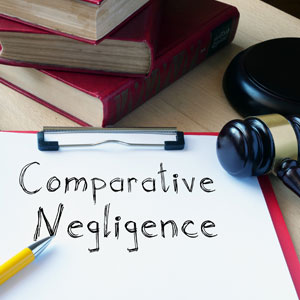
In this article, you can discover…
- How comparative negligence is defined in Kentucky.
- The types of evidence you can gather to help prove fault.
- Whether comparative negligence could impact your settlement amount.
What Does Comparative Negligence Mean?
Comparative negligence is a legal doctrine used to allocate fault among parties involved in an accident or injury. In Kentucky, the doctrine of pure comparative negligence applies, meaning that you can recover damages even if you are more than 50% at fault for your own injuries.
However, the amount of damages awarded is reduced based on your percentage of fault, meaning that while contributory negligence does not bar your recovery, it does reduce your total amount awarded in proportion to your degree of fault.
How Is The Degree Of Fault Typically Determined?
Your percentage of fault will typically be determined by a trier of fact, which can be either a jury or a judge. The process generally involves several steps, beginning with the court instructing the jury to answer specific interrogatories that will help determine the amount of damages that each claimant is entitled to. The trier of fact also takes into account both the nature and conduct of at-fault parties and the full scope of the relation between the conduct in question and the damages claimed.
What Types Of Evidence Can Be Used To Help Prove Fault Distribution?
Various types of evidence can be used to help prove fault distribution in Kentucky. One particular type of evidence that is common in comparative negligence cases is the plaintiff’s failure to take responsible safety measures, such as following traffic laws or wearing a seatbelt.
Another type of evidence we see often involves the ability to foresee the clear danger in premises liability cases. The jury will typically evaluate whether or not the causal danger in the incident was known and obvious, in which case the victims would also have a higher duty to look out for their own safety. Evidence from witnesses regarding the conduct of the parties involved in your accident can also prove crucial to your case.
How Can Comparative Negligence Affect My Settlement Negotiations?
The doctrine of comparative negligence in Kentucky greatly influences settlement negotiations by allowing plaintiffs to recover damages even if they are partially at fault for their injuries. However, the jury will generally be required to distribute fault among all involved parties, meaning that your total recovery will be reduced by your percentage of fault.
For this reason, it is crucial to consider the extent to which your own negligence contributed to your injuries, as this will directly impact the ultimate value of your settlement. Comparative negligence allows for a more nuanced approach where your damages will only be reduced in proportion to your percentage of fault, generally allowing for a more favorable recovery.
Is There Any Benefit To Hiring An Attorney In Cases Where Comparative Negligence Is A Factor?
Hiring an attorney to assist you in a comparative negligence case has a number of benefits. Primarily, an attorney can help you navigate the complexities of the pure comparative negligence system in Kentucky. This system allows you to recover damages even if you are partially at fault, but stipulates that the amount of your recovery is reduced in proportion to your percentage of fault. This makes it extremely important to accurately determine and argue the degree of fault as it applies to each party.
Your attorney can also help you to present and argue your case effectively by using specific jury instructions and legal definitions as established in Kentucky courts. Ultimately, hiring an attorney will provide you with an experienced guide to help you navigate through the state’s specific legal framework while effectively presenting your case to the jury. Combine this with your attorney’s understanding of specific statutory provisions, and you will have all the necessary elements to help you achieve a favorable outcome.
How Do You Help Clients Understand Comparative Negligence When They Feel They Were Not At Fault?
When clients believe that they were not at fault in an accident, I make sure to emphasize that even the smallest contribution toward the accident could cause their compensation to be reduced due to their percentage of fault.
This means that as a client, I will make sure that you are aware of the possibility that you could be found partially at fault for just about anything, meaning that you would not receive the full amount of damages that you would if you were without fault. In a comparative fault case, the law will look at the degree of fault that each party shares in the incident rather than who was found mostly at fault.
How Do You Validate Client Emotions While Helping To Maintain Realistic Expectations?
I was actually involved in a major motor vehicle accident, so I understand many of the feelings that my clients are going through. I make a point to share my personal experiences with my clients so that they can relate to me and see that I come from a similar place.
I am able to understand both the plaintiff’s and the defense’s perspectives and I am intimately familiar with insurance company tactics, as I have represented numerous insurance companies in opposing injury claims. I will generally establish a clear line of communication with my clients and establish realistic expectations while keeping them educated on their case and practicing active listening to better understand their questions and concerns.
Still Have Questions? Ready To Get Started?
For more information on Comparative Fault In Kentucky, a free initial consultation with Leonard Law Firm is your next best step. Get the information and legal answers you are seeking by calling (270) 817-7221 today.
